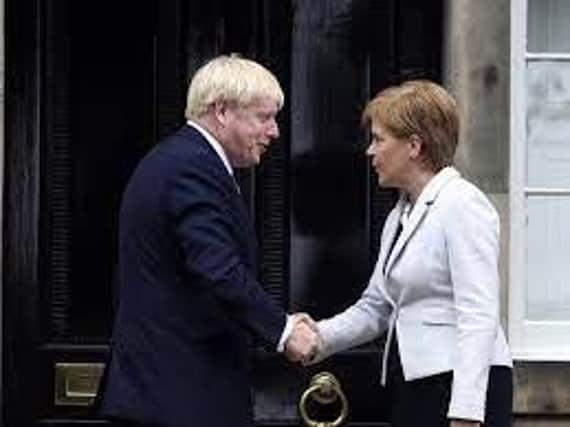Scottish election 2021: SNP need to work with Boris Johnson after voters back status quo – Jo Mowat


The last two days watching the votes come in at Ingliston not only gave us eyestrain as we had to try and decipher the votes from a two-metre distance but brought campaigners from across the parties together which reminded us all how much we had missed in this semi-detached election.
Despite long queues at polling stations and higher turnouts in every constituency in the city, the result is a resounding confirmation of the status quo.
Advertisement
Hide AdAdvertisement
Hide AdSome constituency seats have changed hands. The loss of Edinburgh Central to the SNP is hugely disappointing on a personal and party level but this is a seat that has changed hands at every Scottish Parliamentary election and it was always going to very difficult to hold with Ruth Davidson stepping down.
For if these elections have shown us anything, it seems to be that incumbents do well in elections as you emerge out of a pandemic.
Across the United Kingdom, we have seen the incumbent parties win. In Wales, Mark Drakeford took Labour to their sixth successive victory as the largest party with half the seats in the Senedd and in England the local elections saw significant increases in Conservative councillors elected and at time of writing an increase in control of 12 authorities.
There has been much made of the increased majorities in Edinburgh but closer examination of the figures reminds us that the population of the Lothian region has increased by 49,069 over the last five years which, combined with an increase in turnout of 6.3 per cent, means the gaps between the parties get bigger.
Advertisement
Hide AdAdvertisement
Hide AdThere was also a clear use of tactical voting in all of the seats giving uneven swings across the region. Clear beneficiaries of this were Labour in Southern and Eastern, the Lib Dems in Western and, to a smaller and not sufficient amount, the Conservatives in Central.
It was very successful in supporting incumbents to win and to win bigger majorities. To interpret these results as a vote for change would be to ignore the demographic facts of life in Edinburgh and the Lothians which is that this is the fastest growing part of Scotland.
Across the country, there has been very little movement in the numbers and the country remains where it was prior to the election – about to begin its recovery from the biggest peacetime impact on the country standing on two sides of an uncrossable constitutional cavern.
The SNP said this election was about choosing who should lead the recovery from the pandemic but before they had finished counting the votes Nicola Sturgeon was claiming the result as a mandate for a referendum.
Advertisement
Hide AdAdvertisement
Hide AdThat is not the way to bridge the chasm. I hope that there will be a positive response to the Prime Minister’s invitation to a taskforce to rebuild the country as this is the time to pull together to recover and not pull apart.
Jo Mowat is a Conservative councillor for the City Centre ward
A message from the Editor:
Thank you for reading this article. We're more reliant on your support than ever as the shift in consumer habits brought about by coronavirus impacts our advertisers.
If you haven't already, please consider supporting our trusted, fact-checked journalism by taking out a digital subscription.
Comment Guidelines
National World encourages reader discussion on our stories. User feedback, insights and back-and-forth exchanges add a rich layer of context to reporting. Please review our Community Guidelines before commenting.